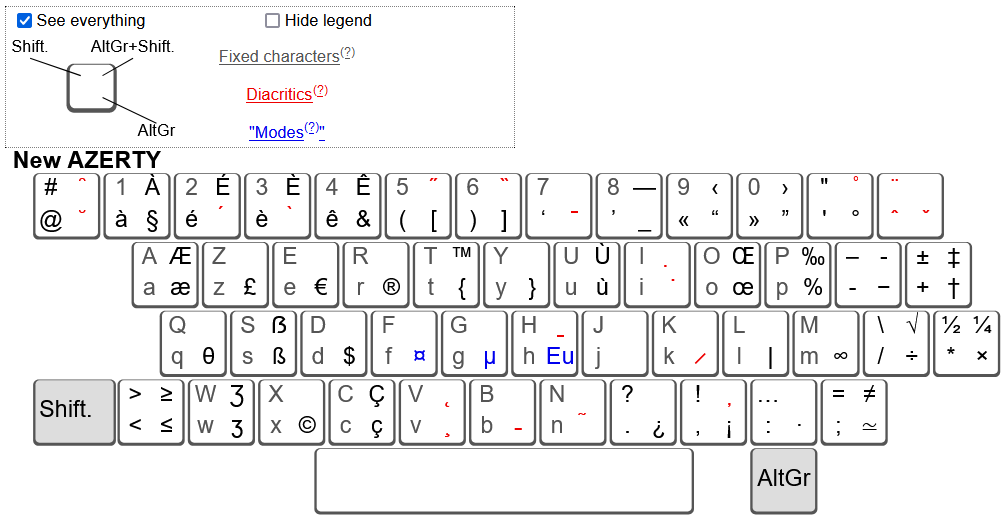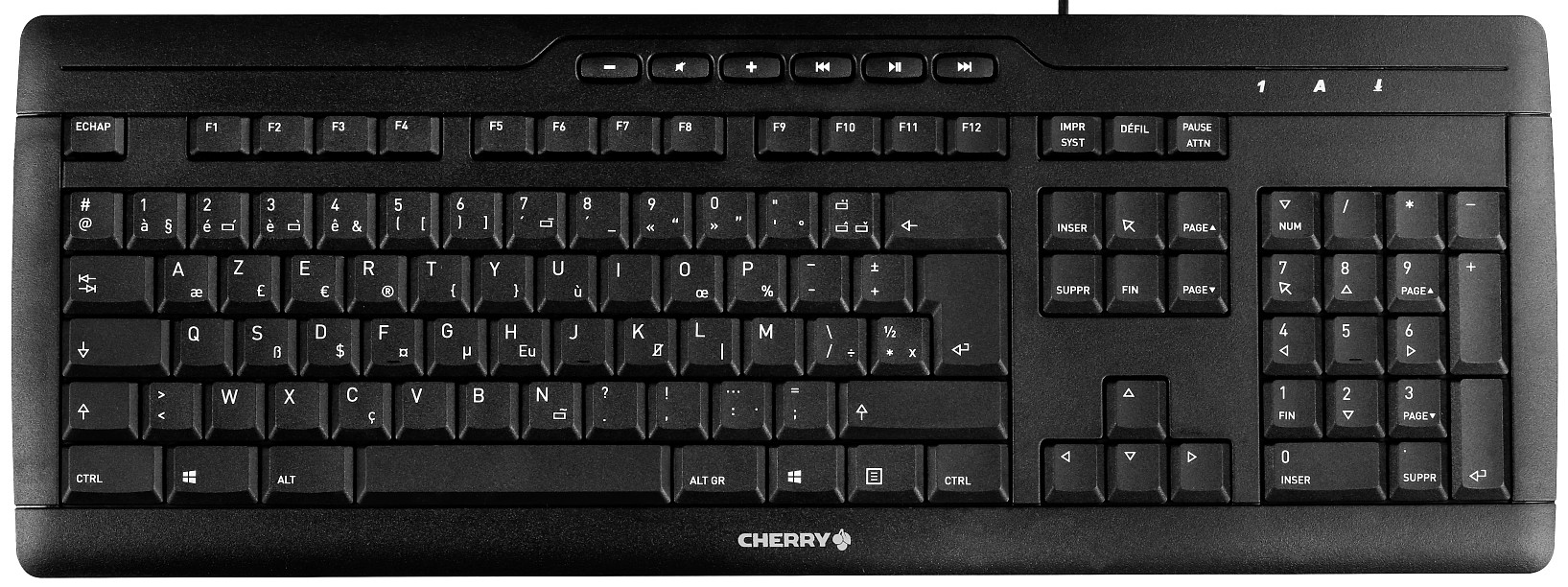New AZERTY French Keyboard Layout (2019)
Frence has a new keyboard layout, designed by the French government. The project began in 2015 and completed in 2019. The new layout is called standard NF Z71-300.
French gov also sanctioned another layout, the Bepo Layout (French), as part of the French standard for keyboard layout.

The project was launched at the end of 2015 on a proposal from the Délégation générale à la langue française et aux langues de France (Ministry of Culture), based on the observation that the current “azerty” keyboards constrain the writing of French, regional languages and European languages with a Latin alphabet.
For the first time, a standard (NF Z71-300) defines the placement of characters on the French keyboard. It describes two layouts, one of which closely follows the AZERTY keyboard used by most people who write in French. However, it is in many respects superior to the old keyboard :
- It contains the entire set of characters required to type in French (for example É, œ et « »)
- It is designed to be more ergonomic and to allow faster input
- It includes almost 60 additional characters for foreign languages, technical content, etc.
- Yet, characters are still easy to locate thanks to intuitive groupings.
The new AZERTY layout has been developed using computer algorithms. These are based on the results of the most recent research in the field of text input, on a large amount of French text data (including newspapers, programming code, and Twitter posts), and on large-scale studies of keyboard typing speed.
[2022-01-06 from http://norme-azerty.fr/en/ ]
Despite the big claims, the New French AZERTY is an incompetent layout.
